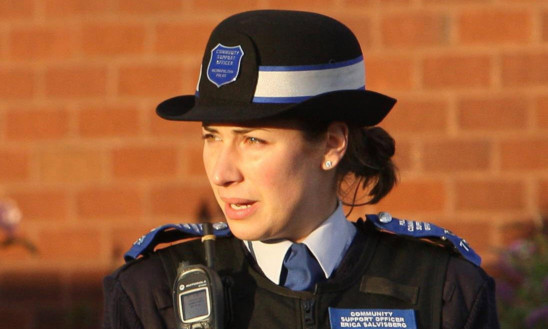Controversial police community support officers should be introduced in Scotland, according to a major trade union.
A report by Unison, which represents police staff, says the scheme would “plug an important gap in neighbourhood policing”.
PCSOs are currently deployed in England and Wales but difficulties have dogged the bill, with significant initial resistance from police officers.
However, the wide-ranging Unison document, entitled Civilianisation of Police in Scotland and due to be published this week, makes the case for their introduction alongside community wardens.
The report says: “PCSOs have a number of strategic and operational advantages that make their introduction in Scotland an attractive option for consideration.
“Compared to using officers, PCSOs are a more cost-effective approach to neighbourhood policing and provide greater geographical coverage. They have also been shown to be a proven success in tackling high volume and low level neighbourhood crimes.
“Compared to wardens, they offer a number of key legal and organisational advantages in terms of their roles and powers, management, supervision and accountability, and their funding arrangement.”
It adds: “The strengths of adopting PCSOs in Scotland outweigh any of the criticisms of the role that have arisen in England and Wales. The approach is proven, effective, reinforced by sustainable funding arrangements and would plug an important gap in neighbourhood policing in Scotland.”
Unison Police Staff Scotland branch secretary George McIrvine said: “Why, in these difficult economic times, is the taxpayer paying on average 30% more for an unskilled police officer to carry out duties such as custody, control room, etc when they themselves and the public wish to see these very officers visible on the public street better protecting and serving the community?
“Unison continues to challenge Kenny MacAskill to look favourably at rational alternatives such as the introduction of PCSOs that would benefit the communities as well as ever restrictive budgets. If it works in England and Wales, why not Scotland?”
However, Tayside Police Federation secretary David Hamilton said such a move would lead to confusion about the roles and powers of PCSOs and police.
He said: “The PCSOs in England and Wales are frankly poorly organised and coordinated. You end up with a two-tier system and I understand a couple of forces are looking at getting rid of them.
“Community wardens do a very useful job, have a very defined role and we work well with them. You can’t break policing down like that, it doesn’t work.”
A Scottish Government spokesman said: “Additional police are helping to make Scotland’s communities safer and recorded crime is at a 37-year low. The establishment of a single police service will safeguard the vital local policing communities value.”
